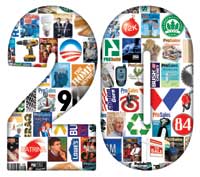Cash and Carry: The 84 Way
–Andy Carlo
The Bubble
The massive homebuilding rise propelled pro dealers to their greatest run of success during the ProSales era. Then the housing bubble burst, quickly bringing dealers thudding back to reality. Dealers on the annual ProSales 100 rose from total sales of nearly $24 billion in 2002 to $43 billion in 2005, peaking at nearly $44 billion in 2006 before crashing back to $28.5 billion in 2008. Rapid sales growth during the period forced dealers to quickly ramp up their facilities, employee count, services offered, and vehicle fleets. As one dealer put it, “It didn’t take much to make money in this business.” But after the crash, many were forced to rethink how they did business, while downsizing and reducing their employee count. In some cases, facilities opened just a year or twoearlier were mothballed or closed altogether. Two of the industry’s biggest winners in the past decade, Stock Building Supply and Building Materials Holding Corp., entered Chapter 11 earlier this year in order to reorganize their business. They both had the same goal: survive and regroup.
–Andy Carlo
Getting Wired
Although it has been argued that lumber dealers are one of the last groups to adopt new technology, you would be hard-pressed to find a significant dealer that does not have a website or an e-mail address today. As the information highway transformed how business is conducted and information is transferred globally, it likewise has had a vast impact on the LBM world. New technology has allowed dealers to place orders more quickly and check their progress, market themselves to pros, and provide online lists of their locations, services, and products. Want to attract contractors to a product seminar or education session? Send out an e-mail blast. In some cases, dealers have embraced the technology, setting up online systems that allow their customers to monitor their accounts with the dealer. And in an age when staff cuts mean manufacturers’ and distributors’ reps don’t come by as often, the Internet and e-mail have become key sources for news about the market and about competitors.
–Andy Carlo

